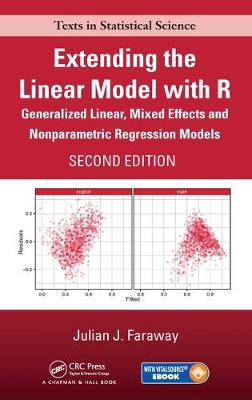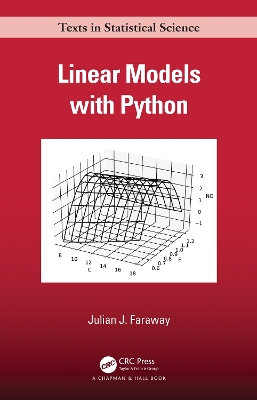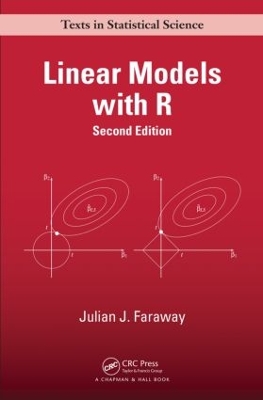Chapman & Hall/CRC Texts in Statistical Science
3 total works
Start Analyzing a Wide Range of Problems
Since the publication of the bestselling, highly recommended first edition, R has considerably expanded both in popularity and in the number of packages available. Extending the Linear Model with R: Generalized Linear, Mixed Effects and Nonparametric Regression Models, Second Edition takes advantage of the greater functionality now available in R and substantially revises and adds several topics.
New to the Second Edition
- Expanded coverage of binary and binomial responses, including proportion responses, quasibinomial and beta regression, and applied considerations regarding these models
- New sections on Poisson models with dispersion, zero inflated count models, linear discriminant analysis, and sandwich and robust estimation for generalized linear models (GLMs)
- Revised chapters on random effects and repeated measures that reflect changes in the lme4 package and show how to perform hypothesis testing for the models using other methods
- New chapter on the Bayesian analysis of mixed effect models that illustrates the use of STAN and presents the approximation method of INLA
- Revised chapter on generalized linear mixed models to reflect the much richer choice of fitting software now available
- Updated coverage of splines and confidence bands in the chapter on nonparametric regression
- New material on random forests for regression and classification
- Revamped R code throughout, particularly the many plots using the ggplot2 package
- Revised and expanded exercises with solutions now included
Demonstrates the Interplay of Theory and Practice
This textbook continues to cover a range of techniques that grow from the linear regression model. It presents three extensions to the linear framework: GLMs, mixed effect models, and nonparametric regression models. The book explains data analysis using real examples and includes all the R commands necessary to reproduce the analyses.
- This version replaces R with Python to make it accessible to a greater number of users outside of statistics including those from Machine Learning.
- A reader coming to this book from an ML background will learn new statistical perspectives on learning from data.
- Topics include Model Selection, Shrinkage, Experiments with Blocks and Missing Data.
- Includes an Appendix on Python for beginners.
A Hands-On Way to Learning Data Analysis
Part of the core of statistics, linear models are used to make predictions and explain the relationship between the response and the predictors. Understanding linear models is crucial to a broader competence in the practice of statistics. Linear Models with R, Second Edition explains how to use linear models in physical science, engineering, social science, and business applications. The book incorporates several improvements that reflect how the world of R has greatly expanded since the publication of the first edition.
New to the Second Edition
- Reorganized material on interpreting linear models, which distinguishes the main applications of prediction and explanation and introduces elementary notions of causality
- Additional topics, including QR decomposition, splines, additive models, Lasso, multiple imputation, and false discovery rates
- Extensive use of the ggplot2 graphics package in addition to base graphics
Like its widely praised, best-selling predecessor, this edition combines statistics and R to seamlessly give a coherent exposition of the practice of linear modeling. The text offers up-to-date insight on essential data analysis topics, from estimation, inference, and prediction to missing data, factorial models, and block designs. Numerous examples illustrate how to apply the different methods using R.


